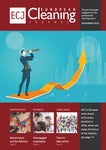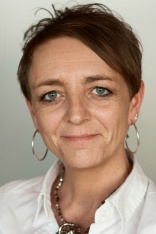Home › magazine › european reports › Innovative cleaning in Denmark's kindergartens
Innovative cleaning in Denmark's kindergartens
26th of October 2012Our correspondent in Scandinavia Petra Sjouwerman reports on a Danish research project on innovative cleaning in day care centres.
Snot and saliva are part of daily life in nurseries and kindergartens. Bacteria and viruses have free rein in day care centres. The consequence: infectious diseases that spread amongst children, parents, staff and their families.
Could we develop cleaning methods and cleaning products that could help prevent infectious diseases in day care centres? A Danish innovation consortium is trying to find an answer to this interesting question. The consortium consists of research institutions, municipalities, nurseries, kindergartens and private companies, like ISS Facility Services and Danish developers of cleaning products.
More diseases
A study has shown that children in day care centres have up to seven times more infectious diseases each year compared with children who stay at home. As the majority of the Danish children between one and six years old go to care centres on a daily basis, this has an important economic effect.
One of the focus points of the research project is distribution of responsibilities between teachers and cleaning staff. Despite the fact it is well known that thorough cleaning is an effective way to prevent infections from spreading, day care personnel often lack time for cleaning toys, for example. And cleaning Lego, dolls or puzzles is generally not mentioned in the job description of the cleaning staff.
"There is a need to define who does what between teachers and cleaning staff," explains Eva Høy Engelund, project leader at the Danish office of DHI, the international consulting and research organisation that is also involved in the consortium.
Specific disinfection
In one intervention study the researchers assigned teachers to disinfect specific areas, like nappy changing areas. It turned out that most teachers didn’t know how to use cleaning products correctly. "That is why they got some basic instruction. The first raw results have just arrived a couple of days ago. We can see that these interventions have had an effect on diminishing the number of cases of eye infections, laryngitis and influenza."
Another important part of the project is the development of a new effectiveness test for disinfection products.?"Often disinfection products have to be in contact for several minutes, for example on door handles or light switches. But in their daily work both teachers and cleaning staff lack time for this.
"There is a need to find new disinfection methods and routines that are more user friendly for these kind of institutions."
But it is not a simple matter of using more disinfection products, underlines Klara Marie Mikkelsen, technical consultant at ISS Facility Services in Denmark. "These products should be used more consistently on specific areas, like on the lower parts of doors, on tables and also the underside of the table, which children often touch," she says.
The project is supported financially by the Danish Council for Technology and Innovation and the results are expected in 2014. "We are not interested in how things work in the laboratory. We are working on solutions that work in reality," emphasises the Danish project leader.










